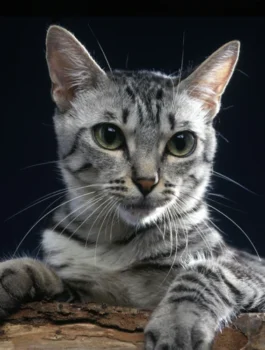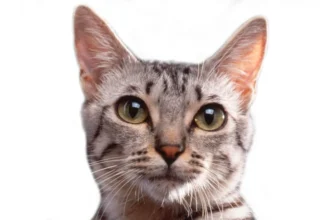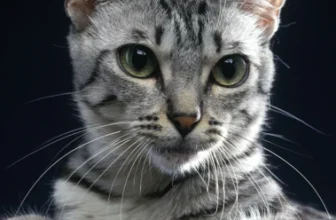The beauty and elegance of the California Spangled is a wonder to behold. This rare feline breed is treasured by many cat lovers, but few know about the effort required to preserve these unique and cherished characteristics. That’s why understanding the role of breeding standards in maintaining this purebred cat is vital. With breeding standards, breeders can ensure that each California Spangled has the same physical appearance, temperament, and health traits that make them so remarkable. Join us on a journey to unravel the secrets behind the role of breeding standards in preserving the purebred California Spangled.
The California Spangled Breed Standard
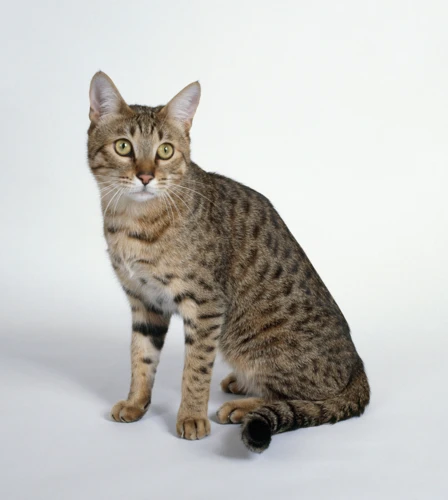
The California Spangled breed is a unique and rare breed with distinctive physical and behavioral characteristics that set it apart from other breeds. To ensure that these qualities are preserved in future generations, a comprehensive set of breed standards has been established. These standards cover the cat’s physical appearance, temperament, and health. Breeders who aim to maintain the purity of the California Spangled must adhere to these standards. In the following sections of this article, we will delve deeper into why these standards are important and the role they play in preserving this special breed for future generations. We will also discuss the challenges that breeders face in maintaining these standards and how they can overcome them. But first, let’s explore the breed standards in more detail. To know more about evaluating the quality of purebred California Spangled, read this insightful article.
Physical Appearance
California Spangled cats are known for their unique and eye-catching physical appearance. They possess a powerful, athletic build and are medium to large in size. They have striking almond-shaped eyes, broad heads, and high cheekbones. Their ears are medium to large in size and have a slightly rounded tip. The nose is wide and slightly concave, with a short, sturdy neck.
The coat of a California Spangled cat is short and dense, with a wild spotted pattern. The spots can be round, oval, or square, with dark lines extending from the corner of the eyes. The coat can come in a variety of colors, including brown, gold, silver and tawny. The overall appearance of the California Spangled cat is that of a wild cat that resembles the wild leopard, but with a more loving and domesticated demeanor.
The striking and unique physical appearance of the California Spangled cat is one of the main reasons why they are highly sought after as pets. They are a breed that stands out in a crowd and is sure to attract attention wherever they go. However, this distinctive appearance would not be possible without adherence to strict breeding standards.
Breeding standards for the California Spangled cat aim to maintain the breed’s characteristic physical traits and prevent any deviation from them. Quality breeding will ensure that the cat retains its unique physical traits for generations to come. These standards guarantee a physical appearance that is both stunning and healthy, as well as reflecting the breed’s wild past.
To learn more about the role of breeding standards in maintaining the physical appearance and overall health of the California Spangled cat, read our article on breeding standards for the California Spangled cat. It explores why these standards play a crucial role in salvaging felines from genetic abnormalities and possible health problems, particularly if you are interested in becoming a reputable California Spangled breeder, or wanting to get a healthy pet cat from a good breeder of California Spangled cats.
Temperament
California Spangled cats are widely known for their exceptional temperament. They are very intelligent, intuitive, playful, and affectionate. Their ability to adapt to different situations and interact with people and other pets is something that sets them apart from other breeds.
Here are some of the key traits that describe the temperament of California Spangled cats:
| Intelligence | California Spangled cats are highly intelligent and curious. They love to explore their environment, interact with people and toys, and use their problem-solving skills to figure out puzzles. |
| Playfulness | These cats have a lot of energy and love to play. They enjoy chasing toys, climbing cat trees, and engaging in interactive playtime with their owners. |
| Affection | California Spangled cats are very people-oriented and love to cuddle and be pet. They are also known for their loyalty and will often follow their owners around the house. |
| Independence | While California Spangled cats love attention, they also have an independent streak. They don’t require constant attention and can be left alone for short periods of time. |
| Socialization | It is important to socialize California Spangled cats from a young age. They enjoy being around people and other animals but may be timid around strangers if not properly socialized. |
The California Spangled cat is a remarkable breed with a delightful temperament that makes them ideal family pets. Their unique characteristics have made them popular among cat lovers all over the world. If you’re interested in breeding California Spangled cats, it’s important to prioritize their temperament in your breeding program. To learn more about breeding this amazing breed, visit our article on breeding California Spangled cats.
Health
The health of the California Spangled cat breed is an important aspect of breeding standards. Breeders should prioritize the health and well-being of their cats to ensure the continuation of the breed. Here are some important considerations for the health of California Spangled cats:
- Diet: A healthy diet is important for any cat, but especially for purebred cats like the California Spangled. Breeders should provide high-quality, balanced food and ensure that cats have access to clean water at all times.
- Genetic testing: Genetic testing can identify potential health issues that may be passed down through breeding. Breeders should test their cats for common genetic disorders and work to eliminate these issues from the breeding pool.
- Vaccinations: Vaccinations protect cats from serious diseases. Breeders should follow recommended vaccination schedules and keep all cats up-to-date on their shots.
- Regular vet check-ups: Regular visits to the veterinarian can help detect health issues early and prevent problems from becoming more serious. Breeders should take their cats for regular check-ups and address any health concerns promptly.
- Health guarantees: Some breeders offer health guarantees for their cats, which can provide peace of mind for buyers. These guarantees often include agreements to cover certain health issues or provide a replacement cat if a health problem arises.
By prioritizing the health and well-being of California Spangled cats, breeders can help ensure the future of the breed. Regular health monitoring and careful breeding practices can help prevent genetic abnormalities and ensure that these beautiful cats remain healthy and happy for years to come.
Why Breeding Standards Matter
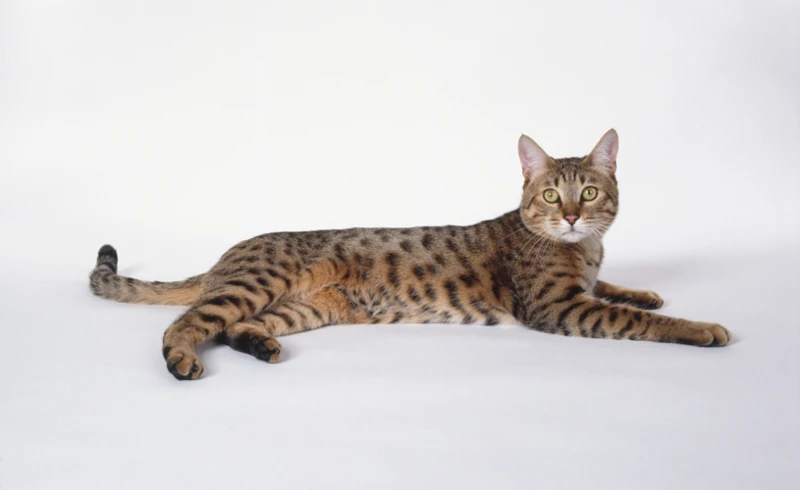
Breed standards are important guidelines that define the characteristics of a specific breed and help identify its purity. But why exactly do breeding standards matter in preserving the California Spangled breed? Without clear guidelines to follow, breeding can result in a loss of the breed’s unique characteristics and genetic abnormalities. It is important to understand the significance of maintaining breeding standards in order to fully appreciate the California Spangled breed’s true potential. In this section, we will delve deeper into why breeding standards matter and explore the various ways in which they contribute to the preservation of the breed.
Maintaining Breed Characteristics
Maintaining breed characteristics is one of the most important reasons for having breeding standards. These standards ensure that the California Spangled cat retains its unique and distinctive features that set it apart from other breeds. The breed’s physical attributes, temperament, and health are key characteristics that breeders strive to maintain.
Physical Appearance
One of the most important aspects of maintaining the breed’s physical appearance is keeping the cat’s body type and coat pattern consistent. The California Spangled is a medium-sized cat with a muscular, athletic build. Breeders should carefully select cats that meet the breed standard for size and build when breeding.
The cat’s coat is also an important characteristic to maintain. The California Spangled is known for its unique, spotted coat pattern. Breeders must ensure that the spots are evenly distributed and the coat is not too thin or too thick. Inbreeding can lead to unwanted coat variations, so it’s important for breeders to carefully manage their breeding programs.
Temperament
The California Spangled breed is known for its friendly and outgoing temperament. They are highly social cats and enjoy interacting with people. Maintaining a friendly, social temperament is important for this breed’s continued success.
Breeders should select cats with a social and playful personality for breeding. Kittens should be socialized from a young age to ensure they develop friendly personalities.
Health
Health is a crucial characteristic for any breed, and the California Spangled is no exception. Breeders should carefully screen cats for known health issues and ensure that only healthy cats are used for breeding. This helps to maintain a healthy gene pool and prevent the spread of harmful genetic conditions.
Regular veterinary check-ups are also important to ensure that breeding cats are in good health. Breeders should also keep detailed records of their cats’ health issues and share this information with other breeders to help maintain the overall health of the breed.
Maintaining breed characteristics is essential for the success of the California Spangled breed. Breeders must carefully select cats that meet the breed standard, maintain friendly and social temperaments, and ensure that only healthy cats are used for breeding. By doing so, they can help preserve this unique and distinctive breed for future generations to enjoy.
| Physical Appearance | Temperament | Health |
|---|---|---|
| The California Spangled is a medium-sized cat with a muscular, athletic build. Breeders should carefully select cats that meet the breed standard for size and build when breeding. The cat’s coat has a unique, spotted pattern that should be evenly distributed. | The California Spangled is known for its friendly and outgoing temperament. Breeders should select cats with a social and playful personality for breeding and ensure kittens are socialized from a young age. | Breeders should carefully screen cats for known health issues and ensure that only healthy cats are used for breeding. Regular veterinary check-ups are important to maintain good health. |
Preventing Genetic Abnormalities and Health Issues
Maintaining breeding standards in the California Spangled breed is crucial to prevent genetic abnormalities and health issues. One way to control these factors is by implementing breeding guidelines that breeders must follow.
Genetic Abnormalities
Inbreeding, which is common in small breeding populations, can cause genetic abnormalities to develop. The use of a limited gene pool increases the chances of mating two cats that are closely related, producing offspring with genetic abnormalities.
Tbl: Examples of Genetic Abnormalities
| Abnormality | Description |
|————-|————-|
| Polycystic kidney disease | Cysts develop and multiply in the kidneys |
| Hypertrophic cardiomyopathy | The thickening of the heart muscle which can lead to heart failure |
| Progressive retinal atrophy | Degeneration of the retina, leading to vision loss |
Health Issues
Breeding standards play a crucial role in preserving the health of the California Spangled breed. Breeders must follow guidelines to ensure that cats are healthy and free from health issues before they are bred. This prevents the transfer of genetic diseases to future generations.
Tbl: Examples of Health Issues
| Health Issue | Description |
|————–|————-|
| Obesity | A common issue among domestic cats, caused by overfeeding and lack of exercise |
| Dental issues | Poor dental hygiene can lead to gum disease, tooth decay, and tooth loss |
| Feline lower urinary tract disease | A common condition caused by an inflamed urinary bladder or urethra |
By following strict breeding standards, breeders can prevent the occurrence of genetic abnormalities and ensure the overall health of the breed. This can be achieved by selecting healthy breeding cats, conducting regular health checks, and avoiding inbreeding. It is important for prospective cat owners to choose responsible breeders who follow these guidelines to assure that their cats live long, healthy lives.
Preserving the Breed’s Future
The California Spangled cat breed was on the brink of extinction in the 1980s, but thanks to breeding standards and the efforts of dedicated breeders, the breed is now slowly making a comeback. Preserving the breed’s future requires a vigilant commitment to maintaining breed standards as well as implementing responsible breeding practices.
One important aspect of preserving the breed’s future is ensuring that only healthy cats are used for breeding. Breeders should regularly test their cats for genetic abnormalities and diseases to prevent passing on these issues to future litters. Therefore, genetic testing plays a crucial role in maintaining the health of the breed and producing healthy litters.
Additionally, breeders must ensure that the cats they select for breeding meet all physical and temperamental standards set by the California Spangled breed standard. These standards help to maintain the unique characteristics of the breed, and prevent genetic abnormalities and health issues from being passed down to future generations.
To maintain the breed’s future, breeders must also adhere to responsible breeding practices. This includes monitoring the health and well-being of kittens, providing proper nutrition, socialization, exercise, and veterinary care.
Moreover, educating new owners about the history, characteristics, and care of the California Spangled breed is essential for preserving the breed’s future. Breeders should inform new owners about the importance of keeping their cats indoors and how to provide a safe, nurturing environment for their new pet.
Finally, breeders must stay informed about the challenges in maintaining breeding standards. These challenges including inbreeding, limited gene pool, and outside influences on the breed, such as cats crossing with other breeds. By staying informed about these challenges, breeders can take proactive steps to preserve the California Spangled breed for future generations.
| Ways to Preserve the Breed’s Future |
|---|
| Regular genetic testing |
| Maintaining breed standards |
| Adhering to responsible breeding practices |
| Educating new owners |
| Staying informed about challenges |
In conclusion, preserving the breed’s future is a collective effort that requires ongoing commitment from breeders, owners, and enthusiasts. By maintaining breed standards, adhering to responsible breeding practices, and staying informed about challenges, we can help ensure the continued existence of the unique and wonderful California Spangled breed.
The Role of Breeders in Maintaining Standards
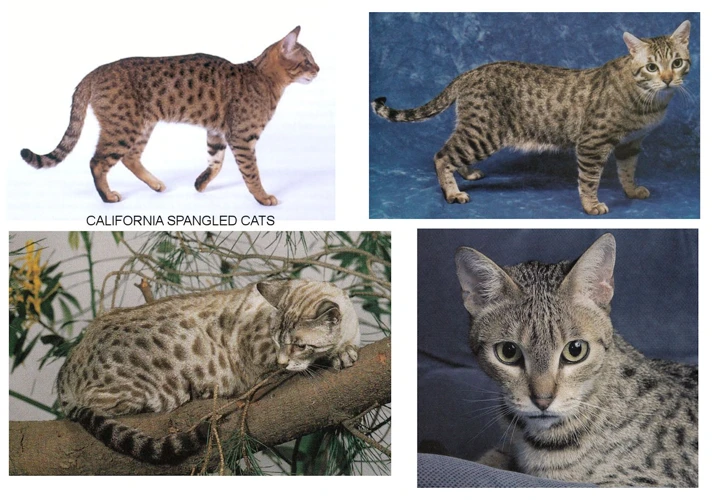
Breeding purebred cats is an art that requires precision and dedication. The role of breeders in maintaining standards is crucial to the preservation of the California Spangled breed. Without responsible breeding, the future of this fascinating breed could be at risk. It’s up to breeders to ensure that the cats they are producing meet the high standards set by the breed standard while also maintaining genetic diversity and overall health. In this section, we will delve into the specific responsibilities that breeders have in maintaining the standards of the California Spangled breed.
Selection of Breeding Cats
When it comes to selecting breeding cats, it’s important to keep the breed standard in mind. Breeders need to carefully choose only the cats that exhibit the physical and temperamental traits that meet the breed standard. This means that breeders should look for cats that have strong bones, powerful muscles, a distinctive coat pattern, and almond-shaped eyes.
Here are some key factors that breeders should keep in mind while selecting cats for breeding:
- Health: Breeders should only choose healthy cats that have been tested for genetic diseases and medical conditions that are common in the breed. They should also make sure that the cats have up-to-date vaccinations and a good overall health record.
- Temperament: The California Spangled breed is known for its friendly and playful nature. Breeders should choose cats that have a similar disposition and are not aggressive or shy.
- Pure Bloodlines: Breeders should make sure that the cats they select come from pure bloodlines and do not have any history of crossbreeding. This helps to maintain the desired physical and temperamental traits in the breed.
- Compatibility: Breeders should also consider the compatibility of the cats they select for breeding. It’s important to choose cats that complement each other in terms of their physical and temperamental traits, in order to produce litters that meet the breed standard.
Breeders need to keep in mind that selecting cats for breeding is a meticulous and time-consuming process. It’s important to be patient and take the time to carefully evaluate each cat’s physical and temperamental traits before making a decision. Selective breeding is crucial to ensure that the California Spangled breed continues to thrive and meet the breed standard.
Responsible Breeding Practices
Responsible breeding practices are crucial in maintaining breeding standards and preserving the purebred California Spangled. Here are some important practices that breeders should follow:
| Practice | Description |
|---|---|
| Screening for Health Issues | Before breeding, it’s important to screen cats for any genetic health issues that might be present in the breed. Breeders should work closely with veterinarians and geneticists to ensure that all breeding cats are healthy and free of any inherited disorders. |
| Selection of Compatible Mates | When choosing mates for breeding, it’s important to select cats that complement each other in terms of physical appearance and temperament. Breeding cats that are too similar can lead to inbreeding and a weakened gene pool, while choosing two cats with vastly different temperaments can result in unpredictable offspring. |
| Limiting the Number of Litters | Breeders should limit the number of litters that their cats produce in order to prevent overbreeding and ensure that the cats have time to recover between litters. Responsible breeders prioritize the health and well-being of their breeding cats over profit. |
| Socialization of Kittens | Good breeders do not sell kittens until they are at least 12 weeks old and have had appropriate socialization with their mother and littermates. Kittens that are not socialized properly often have behavioral issues later in life. |
| Providing Proper Care and Nutrition for Breeding Cats and Kittens | Breeders should ensure that their cats and kittens have access to appropriate food, water, shelter, and medical care. They should also provide a safe and clean living environment for their cats and their litters. |
By following these responsible breeding practices, California Spangled breeders can ensure that their cats are healthy, happy, and well-cared for. This will help to maintain the breed’s standards and prevent genetic abnormalities and health issues from arising.
Educating New Owners
One of the crucial roles breeders play in maintaining breeding standards is educating new owners. Bringing home a new California Spangled cat is an exciting experience, but it also comes with a set of responsibilities. Owners need to be educated about the breed’s specific needs and nuances.
A breeder should prepare a comprehensive guide for the new owners that includes all of the necessary information regarding the care and maintenance of their new cat. This guide should contain information regarding the cat’s exercise needs, diet, behavior training, and grooming requirements. In addition, owners must be aware of the potential health issues that the breed may face, along with the precautions that must be taken to prevent such issues.
It is also important for breeders to educate new owners about their responsibility as breeders. It is not uncommon for new owners to want to breed their pets for financial gain, but this can cause significant problems if they are not done correctly. Breeders should explain to the new owners the risks associated with unregulated breeding and the importance of following breeding standards to prevent genetic abnormalities.
By educating new owners, breeders can help in preserving the California Spangled breed’s purity and health in the long run. A list of things that should be covered during the education process might include:
- The breed’s personality and temperament
- Special dietary needs and food restrictions
- Exercise requirements and suggestions for playtime activities
- Information on grooming needs, including brushing, bathing, and nail clipping
- Preventative health care measures, including regular veterinary check-ups and vaccinations
- The importance of spaying or neutering their cat to prevent uncontrolled breeding
- Guidelines for responsible breeding practices for those interested in breeding their cats
Educating new owners is an essential part of maintaining breeding standards for the California Spangled breed. It helps promote responsible pet ownership and ensures that cats remain healthy and happy in their new homes. Breeders must ensure that they provide detailed and relevant information to the new owners so that they can take care of their cats with confidence and knowledge.
Challenges in Maintaining Breeding Standards
Maintaining breeding standards for the California Spangled breed is a crucial responsibility for breeders. However, there are several challenges that breeders face in preserving and improving the breed. These challenges can make it perplexing for breeders to produce cats that meet the breed standards while also ensuring the cats’ health and genetic diversity. Let’s take a closer look at some of the most significant challenges that breeders face in maintaining breeding standards for California Spangled cats.
Inbreeding
Inbreeding is a major challenge in maintaining breeding standards for the California Spangled breed. This process of breeding closely related cats can lead to the amplification of undesirable traits and genetic abnormalities while reducing genetic diversity. Breeders need to be extra careful about inbreeding in order to preserve the breed’s health.
Effects of Inbreeding
Inbreeding can have a range of negative effects on the offspring of closely related cats. One of the most significant issues is the increased likelihood of genetic abnormalities and inherited health problems. For example, inbreeding can increase the risk of hip dysplasia, heart disease, and autoimmune disorders in cats.
Ways to Avoid Inbreeding
There are some ways for breeders to avoid inbreeding in their California Spangled cats. For example, breeders can use outcrossing, which involves breeding with cats from a different but genetically similar breed. Another method is to engage in genetic testing to determine the likelihood of genetic disorders before breeding. Additionally, breeders can microchip and document their cats’ pedigrees to track their lineage and avoid breeding closely related cats.
Importance of Avoiding Inbreeding
Avoiding inbreeding is of critical importance to maintain the genetic health of the California Spangled breed. Inbreeding can lead to genetic abnormalities and the eventual loss of genetic variability, which is essential for the breed to thrive. Breeders should prioritize genetic health when selecting breeding pairs to ensure that the breed continues to flourish for years to come.
Limited Gene Pool
One of the major challenges faced by breeders in maintaining breeding standards for the purebred California Spangled is the limited gene pool. The gene pool refers to the total number of genes and the variations that exist within a particular breed. With a limited gene pool, breeders have less genetic variation to work with when selecting breeding pairs, which can result in a higher risk of inbreeding and an increased likelihood of genetic abnormalities.
To understand the challenge of a limited gene pool, it’s important to know that the California Spangled breed almost went extinct in the mid-1980s due to lack of interest and demand. At that time, only a few cats were left in the world, and breeders had to carefully select breeding pairs to revive the breed.
As a result, many of the California Spangled cats today are descended from the same small group of cats that were saved from extinction. While this breeding strategy was successful in reviving the breed, it has also resulted in a limited gene pool, making it more challenging to maintain breeding standards and prevent genetic abnormalities.
To illustrate the impact of a limited gene pool, consider the example of a small population of humans living on an isolated island. Over time, genetic variation within this population will naturally decrease. If the population is further reduced due to a natural disaster, the already limited gene pool will become even smaller, making it challenging to maintain genetic diversity.
Similarly, inbreeding in the California Spangled breed can lead to a reduction in genetic diversity, which can increase the likelihood of health issues and genetic abnormalities. While breeders can manage this by carefully selecting cats with different genetic backgrounds to breed, there is still a limit to the available genetic variation within the breed.
A limited gene pool is a significant challenge faced by breeders who are working to maintain breeding standards for the purebred California Spangled. While careful breeding practices and selection can help mitigate the impact of a limited gene pool, it is important to recognize the potential risks of a reduced genetic variation and work towards preserving the breed’s future.
| Challenge | Impact |
|---|---|
| Limited Gene Pool | Risk of inbreeding and genetic abnormalities |
Outside Influences on the Breed
The California Spangled breed has been in existence for several decades, and throughout this time, a number of outside influences have had an impact on the breed’s development. Some of these influences have been positive, while others have been negative and have created challenges for breeders.
1. Crossbreeding
One of the outside influences that has had both positive and negative impacts on the California Spangled breed is crossbreeding. While crossbreeding can introduce new genes and improve the health and wellbeing of the breed, it can also lead to the dilution of the distinctive physical characteristics and temperaments that define the California Spangled breed.
2. Popularity
The popularity of a breed can also be an outside influence. Increased demand for a specific breed can lead to overbreeding, and breeders may start cutting corners to keep up with the demand. This rush to produce more kittens can lead to negative impacts on the breed, such as an increased incidence of genetic abnormalities or health issues.
3. Changing Trends
Another factor that can affect the California Spangled breed is the changing trends in the cat world. Some breeders may be influenced by trends in other breeds and attempt to introduce similar characteristics in California Spangled cats. However, this can have a negative impact on the breed’s uniqueness and lead to a dilution of its distinctive features.
4. Unforeseen Health Issues
Even with careful breeding practices, unforeseen health issues can arise, and these can have a significant impact on the California Spangled breed. For example, a contagious disease that affects cats can decimate a breeding population, leaving the breed with limited genetic diversity and creating challenges for breeders who rely on a healthy gene pool.
5. Environmental Factors
Environmental factors such as climate change or natural disasters can also have an impact on the California Spangled breed. For example, changes in weather patterns can lead to the emergence of new diseases or pests that were not previously seen in the area. These environmental factors can create challenges for breeders who must adapt their breeding practices to account for these new threats.
The California Spangled breed has faced a number of outside influences over the years, and while some have been positive, many have been challenging for breeders. Maintaining the breed’s unique characteristics and health requires constant vigilance and care from dedicated breeders who prioritize responsible breeding practices and the preservation of the breed’s future.
Conclusion
In conclusion, breeding standards play a crucial role in preserving the purebred California Spangled. The breed standards outline the physical appearance, temperament, and health of the California Spangled. By maintaining these standards, breeders ensure that the cats retain their unique traits and characteristics. Breeding standards also help to prevent genetic abnormalities and health issues, ensuring that the breed remains healthy and free from hereditary diseases in the long term.
Breeders have a responsibility to select breeding cats carefully and to employ responsible breeding practices. Educating new owners is also important in ensuring that the cats are raised and cared for properly. However, there are challenges associated with maintaining breeding standards, such as inbreeding, a limited gene pool, and outside influences on the breed. Overcoming these hurdles will require careful planning and collaboration among breeders, veterinarians, and cat lovers alike.
Despite these challenges, the future of the California Spangled as a purebred breed is bright, thanks to the dedication and commitment of breeders worldwide. By continuing to maintain and improve breeding standards, the beauty and uniqueness of the California Spangled will continue to be enjoyed by cat lovers for years to come. Let’s all work together to ensure that this beautiful breed will thrive for generations to come.
Frequently Asked Questions
What is the California Spangled breed?
The California Spangled is a rare and exotic breed of cat that was originally bred in the 1980s to resemble wild jungle cats like leopards and ocelots.
What are the physical characteristics of a California Spangled?
California Spangled cats are medium to large in size, with muscular bodies and long legs. They have short, smooth fur with spots or marbling patterns in various colors. Their round eyes are usually green or gold and they have a distinctive “M” marking on their foreheads.
How does the California Spangled cat compare to other breeds in terms of temperament?
California Spangled cats are known for their friendly and outgoing personalities. They make great pets because they are extremely affectionate and love spending time with their owners. They are also very intelligent and playful, which makes them a joy to have around.
What are some common health issues that affect the California Spangled breed?
Like all cats, California Spangled cats may be prone to certain health issues such as dental problems, obesity, and heart disease. It’s important to keep them on a healthy diet and regular vet check-ups to ensure they stay healthy.
Why are breeding standards important for the California Spangled breed?
By adhering to strict breeding standards, it ensures that the breed maintains its unique physical and behavioral characteristics, prevents genetic abnormalities and health issues, and helps preserve the future of the breed.
How do breeders select breeding cats?
Breeders select breeding cats based on physical appearance, temperament, and overall health. It’s important to make sure that the cats are not closely related in order to avoid inbreeding. Ideally, the cats selected for breeding should be free from any genetic abnormalities or health issues.
What are some responsible breeding practices for the California Spangled breed?
Responsible breeding practices for the California Spangled breed include genetic testing to screen for any potential health issues, avoiding inbreeding, and keeping accurate records for each cat’s lineage. It’s also important to socialize and train kittens properly before they go to their new homes.
What is the limited gene pool and how does it affect the California Spangled breed?
The limited gene pool refers to the small number of California Spangled cats that exist, which can lead to a lack of genetic diversity. This can increase the risk of inherited health issues and also makes it difficult to find unrelated cats to breed with.
What are some challenges that breeders face in maintaining breeding standards for the California Spangled breed?
Breeders may face challenges such as difficulty finding unrelated cats to breed with, the high cost of genetic testing, and competing with other breeds for popularity. Additionally, unforeseen health issues can arise in even the most carefully bred cats, which can affect the future of the breed.
What can owners do to help preserve the California Spangled breed?
Owners can support responsible breeding practices by choosing reputable breeders who adhere to strict breeding standards, providing their cats with proper care and regular veterinary check-ups, and avoiding breeding their cats without proper knowledge and resources.

